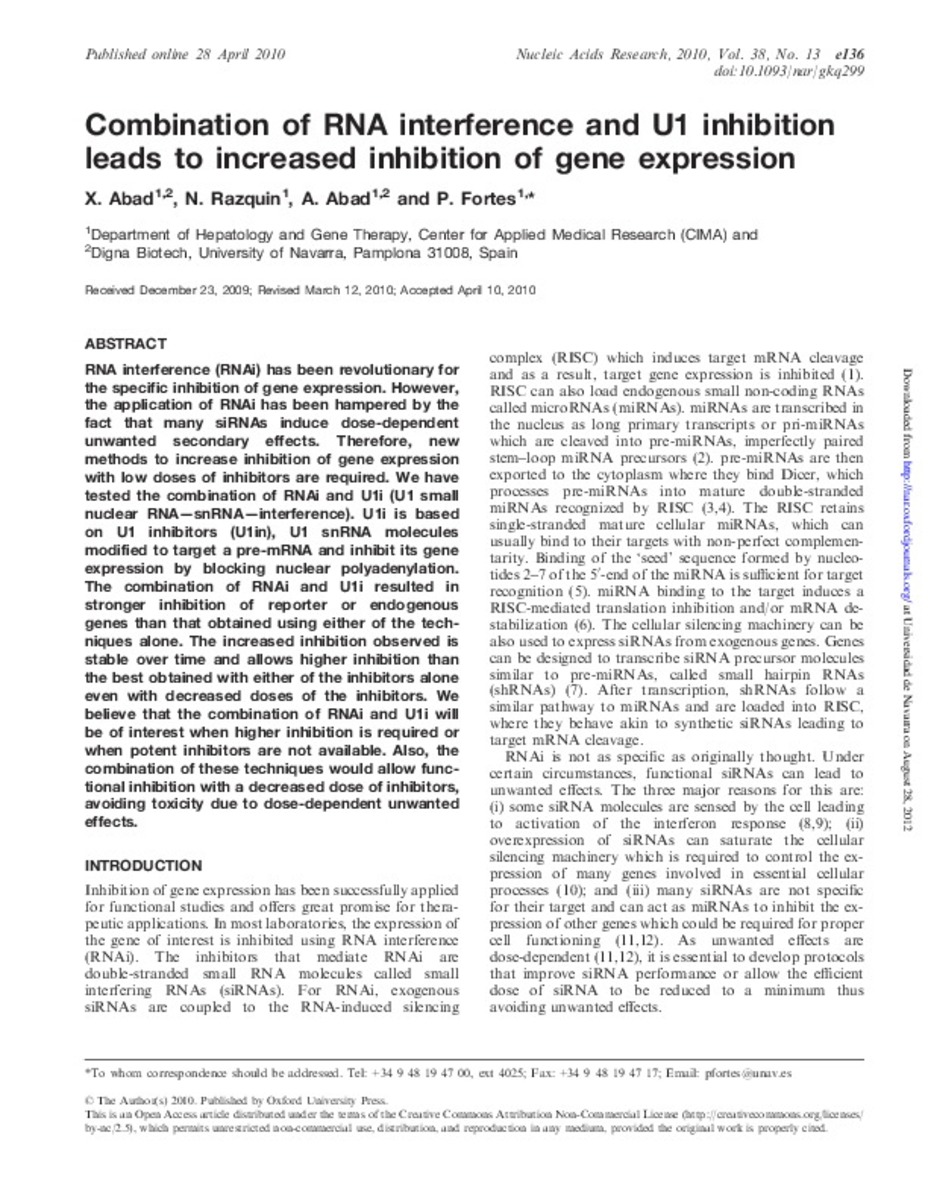Combination of RNA interference and U1 inhibition leads to increased inhibition of gene expression
Palabras clave :
RNA Interference
RNA, Small Nuclear/antagonists & inhibitors
Fecha de publicación :
2010
Editorial :
Oxford University Press
Cita:
Abad X, Razquin N, Abad A, Fortes P. Combination of RNA interference and U1 inhibition leads to increased inhibition of gene expression. Nucleic Acids Res 2010 Jul;38(13):e136.
Aparece en las colecciones:
Estadísticas e impacto
0 citas en

0 citas en

Los ítems de Dadun están protegidos por copyright, con todos los derechos reservados, a menos que se indique lo contrario.







